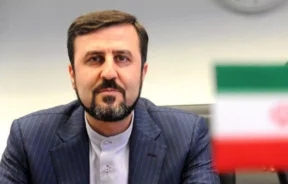Hebrew-Western Media Amplifying Israel’s Attack through Cognitive Warfare
WANA (Oct 29) – Israeli and Western media have sought to amplify Israel’s recent attack by leveraging cognitive warfare. Known as “cognitive warfare,” this approach blurs the line between truth and semi-truth, diminishing the boundary between lies and reality.
Through ambiguity created by media channels, cognitive warfare aims to induce mental confusion, attempting to transform fictional events into tangible realities.
Cognitive warfare, an advanced form of soft warfare, relies heavily on the influence of cyber-media, creating a so-called “post-truth” environment. In this space, objective realities become overshadowed by public emotions, exerting pressure on rational thought.

Enemy’s Misstep: Iran Ready for Precision Strike
WANA (Oct 27) – Iran’s Supreme Leader, Ayatollah Khamenei, responded today to Israel’s October 26 attack on Iran. He challenged the Israelis’ attempt to exaggerate their actions, and his remarks carried key messages: on the one hand, demonstrating Iran’s strategic acumen, and on the other, warning Israel and its allies. Analyzing his speech reveals four […]
The post-truth environment is neither neutral nor inconsequential; instead, it carries negative and harmful impacts on society. This space no longer serves as a battleground between truth and falsehood but rather allows imagined perceptions to overtake reality and align with opposing viewpoints, potentially disturbing societal mental security, weakening public unity, and misrepresenting the home front. Ultimately, the result of this dynamic is a loss of public trust in the governing authority.
Amid this environment, the exaggerated portrayal of Israel’s operations has even prompted responses from security officials.
Yair Lapid, former Prime Minister of Israel, described the attack as a failure and a source of embarrassment for Israel.

From Israel’s Shelters to Tehran’s Rooftops: Reflections on a Failed Attack
WANA (Oct 26) – In the early hours of Saturday, October 27, Israel launched actions targeting military facilities in Iran, which an Israeli military spokesperson described as a response to recent Iranian actions against Israel. According to Daniel Hagari, this was in retaliation for what Israel terms “Iranian threats.” Around 2:30 a.m., explosions were […]
Likewise, Frank McKenzie, former U.S. General and ex-Commander of CENTCOM, labeled the operation as minor and disgraceful.
Despite this, the intense opposition media atmosphere, as well as the role of certain public figures in stirring public opinion, has greatly influenced societal sentiment. Even if no immediate response to Israel’s actions occurs, given the ongoing deconstruction and groundwork laid, the likelihood of repeated provocations by Israel remains.
A decisive and destructive response could potentially bring an end to Israel’s continuation of such actions.













